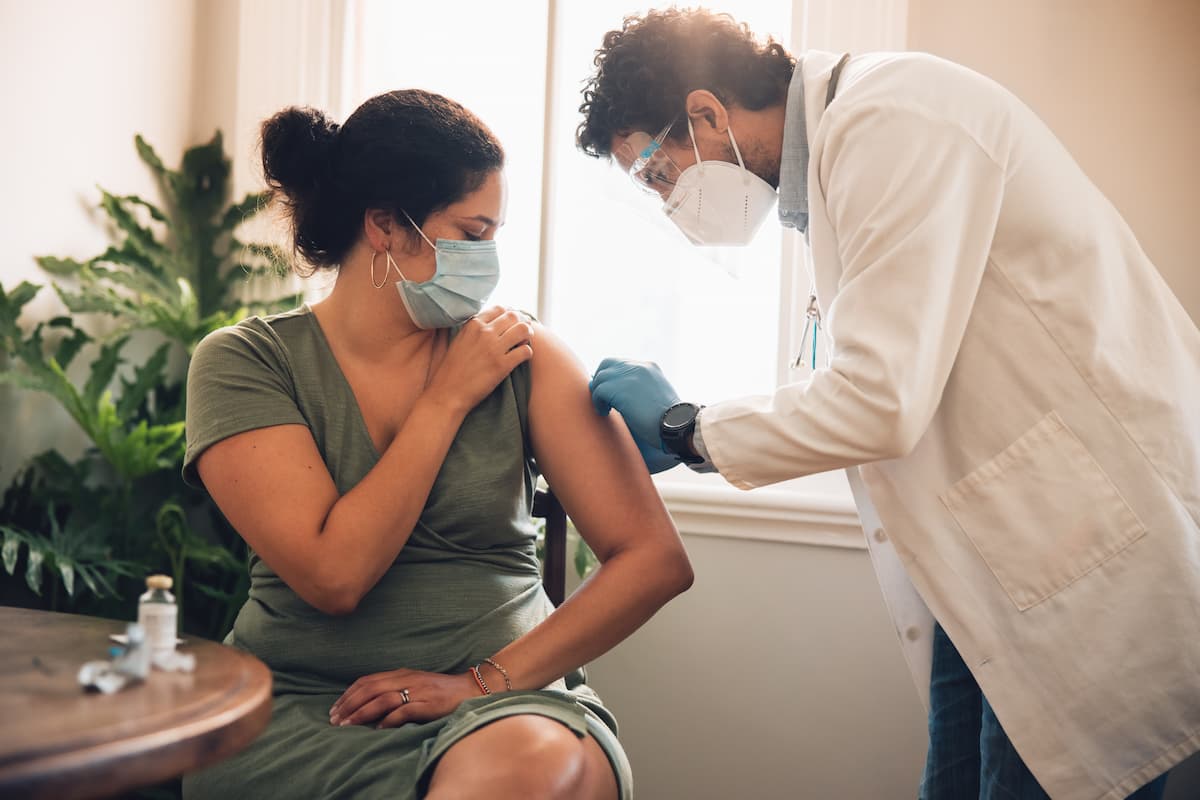News
Article
FDA Approves Amivantamab-vmjw for NSCLC With EGFR Exon 19 Deletions or L858R Mutations
Author(s):
Amivatamab-vmjw is a fully-human bispecific antibody targeting EGFR and MET with immune cell-directed activity.
FDA officials have approved amivantamab-vmjw (Rybrevant; Janssen) in combination with carboplatin and pemetrexed for adults with locally advanced or metastatic non–small cell lung cancer (NSCLC) with epidermal growth factor receptor (EGFR) exon 19 deletions or exon 21 L858R substitution mutations whose disease has progressed on or after treatment with an EGFR tyrosine kinase inhibitor (TKI).1 Amivatamab-vmjw is a fully-human bispecific antibody targeting EGFR and MET with immune cell-directed activity.2
Image credit: appledesign | stock.adobe.com

“Rybrevant plus chemotherapy may address the most common mechanisms of treatment resistance to third generation EGFR TKIs, such as osimertinib, in the first line,” said Martin Dietrich, MD, PhD, an oncologist at Cancer Care Centers of Brevard, in a news release. “This multitargeted combination extended progression-free survival and improved overall response compared to chemotherapy alone, offering an important and effective new second-line option for patients.”2
According to the news release, the 5-year survival rate for individuals with advanced EGFR-mutated NSCLC is less than 20%. There are diverse and polyclonal acquired resistance mechanisms following monotherapy with a TKI, making targeted therapy more challenging at the time of progression and limiting the efficacy of targeted therapies. Adding immunotherapy to chemotherapy has also not demonstrated clinically meaningful improvements in this patient population.2
Efficacy of amivantamab-vmjw plus carboplatin and pemetrexed was evaluated in the MARIPOSA-2 trial (NCT04988295), a randomized, open-label, multicenter trial in 657 individuals with locally advanced or metastatic NSCLC with EGFR exon 19 deletions or exon 21 L858R substitution mutations and disease progression on or after treatment with osimertinib. Treatment was randomized 1:2:2 with either amivantamab-vmjw plus carboplatin and pemetrexed, carboplatin and pemetrexed, or amivantamab-vmjw as part of another combination regimen.1
The major efficacy outcome measure was progression-free survival (PFS) and overall response rate (ORR) and overall survival (OS) were key secondary outcome measures. According to the researchers, median PFS was 6.3 months (95% CI: 5.6, 8.4) in the amivantamab-vmjw plus carboplatin and pemetrexed arm, vs 4.2 months (95% CI: 4.0, 4.4) in the carboplatin and pemetrexed arm. The confirmed ORR was 53% (95% CI: 44, 62) in the amivantamab-vmjw plus carboplatin and pemetrexed arm and 29% (95% CI: 23, 35) in the carboplatin and pemetrexed alone arm.1
At the prespecified second interim analysis of OS, with 85% of the deaths required for the final analysis, there was no statistically significant difference in OS. The stratified OS hazard ratio was 0.73 (95% CI: 0.54, 0.99).1
“The PFS survival benefits seen in the MARIPOSA-2 study are exciting,” said Andrea Ferris, president and CEO of the LUNGevity Foundation, in a news release. “It is good to see new therapeutic options like the combination of Rybrevant and chemotherapy helping to address unmet needs impacting individuals with EGFR-mutated lung cancer, with the potential for positive change, which gives hope to more patients and their families.”2
The most common adverse reactions (≥20%) were rash, infusion-related reactions, fatigue, nail toxicity, nausea, constipation, edema, stomatitis, decreased appetite, musculoskeletal pain, vomiting, and COVID-19 infection.1
“This milestone reinforces Rybrevant as an important treatment option for patients with EGFR-mutated NSCLC who continue to face high unmet needs after disease progression on or after TKI therapy,” said Kiran Patel, MD, vice president of clinical development for solid tumors at Johnson & Johnson Innovative Medicine, in a news release. “Patients need and deserve effective, targeted approaches across all lines of therapy. With Rybrevant-based regimens, we are bringing potential new standards of care to the nearly 30,000 patients diagnosed with EGFR-mutated NSCLC in the US each year.”2
References
1. FDA approves amivantamab-vmjw with carboplatin and pemetrexed for non–small cell lung cancer with EGFR exon 19 deletions or L858R mutations. FDA. News release. September 19, 2024. Accessed September 20, 2024. https://www.fda.gov/drugs/resources-information-approved-drugs/fda-approves-amivantamab-vmjw-carboplatin-and-pemetrexed-non-small-cell-lung-cancer-egfr-exon-19
2. Rybrevant (amivantamab-vmjw) plus standard of care approved in the US as first and only targeted regimen to cut risk of disease progression by more than half in second-line EGFR-mutated advanced lung cancer. News release. Johnson & Johnson. September 19, 2024. Accessed September 20, 2024. https://www.investor.jnj.com/news/news-details/2024/RYBREVANT-amivantamab-vmjw-plus-standard-of-care-approved-in-the-U.S.-as-first-and-only-targeted-regimen-to-cut-risk-of-disease-progression-by-more-than-half-in-second-line-EGFR-mutated-advanced-lung-cancer/default.aspx
Newsletter
Stay informed on drug updates, treatment guidelines, and pharmacy practice trends—subscribe to Pharmacy Times for weekly clinical insights.

FDA Grants Full Approval to mRNA-1273 COVID-19 Vaccine in Children At Increased Risk

Donanemab-Azbt Receives FDA Label Update With New Dosing for Alzheimer Disease



